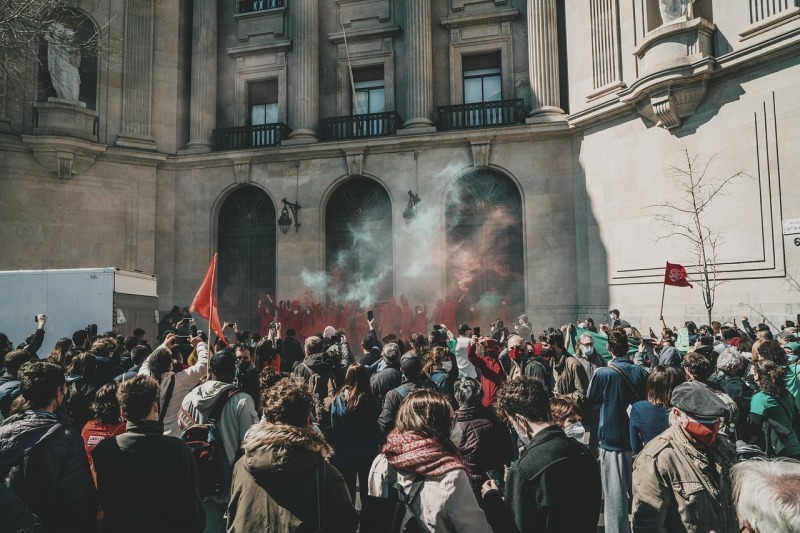
Liturgical protests have arisen at St. Mary's Cathedral Basilica due to the compulsory implementation of the new liturgical norms. Allegedly, these oppositions made it impossible to regularly celebrate mass at the Basilica, which ultimately led to the building's closure.
Liturgy Protest at St. Mary's Cathedral Basilica
On Nov. 27, Archbishop Andrews Thazhath attempted, but failed, to force his way to the St. Mary's Cathedral Basilica to celebrate mass under the uniform mode authorized by the synod in 1999. UCA News reported that this mode mandates that the priests face the altar while praying the Eucharistic prayer. This action outraged the clergy and laypeople of the archdiocese, as they objected to the standard mass and wished to maintain their customary manner, in which the pastor faces the crowd for the entire service. Because of the activities of the archbishop, street fights occurred, which led to the Basilica being shut down and placed under police watch. On Nov. 25, 2022, a three-member commission appointed by Cardinal Alencherry initiated a discussion with the priests and laity, prompting these individuals to state that the archbishop's actions were "an improper act."
According to a report from Crux, since that time, the Basilica has practically been unusable since demonstrations, street brawls, and sporadic acts of vandalism have made it impossible to celebrate the mass there regularly. On Friday, May 26, opponents of the new liturgy regrouped in front of St. Mary's Church, where they leveled accusations against Thazhath for being responsible for the closed church. On the other hand, as a means of responding, the media committee of the Syro-Malabar church published a statement on Saturday, May 27, which referred to the accusation as "false propaganda."
As mentioned, a group of individuals, including priests, took control of the Basilica not long. After that, on the 23rd and 24th of December, several priests began continuously celebrating Holy Mass, a grave violation of the church's regulations. As a direct result of this celebration, a number of the faithful went to the sanctuary and pulled the altar to the side to end the protest celebration. Following the intervention from the police, the individuals were escorted out of the Basilica. Sometime had reportedly passed, and officials from a variety of groups as well as some parishioners contacted the police. The closure of the Basilica was carried out once more in the presence of law enforcement.
Moreover, Andrews Thazhath, the Apostolic Administrator, learned about it much later. Thus, the claim that the Archbishop Administrator is to blame for the closing of the Basilica is completely groundless. Furthermore, to re-establish the cathedral basilica as a place for the legal celebration of the Holy Mass and to reopen the Basilica itself; the Apostolic Administrator has renewed his request for the collaboration of the parishioners and the vicar of the cathedral.
Also Read: Dozen of Churches Vandalized, Set Fire Due to India Violence Following Protest March
Parishioners' Petition to Reopen the Basilica
Since the authorities closed the archdiocese's St. Mary's Cathedral Basilica on Dec. 24 last year after a violent conflict between competing Catholics over the liturgy issue, Tomy Joseph and Antony Joseph claimed their rights were being violated. In addition, Gaudium Express reported that they also petitioned the court for action to reopen the Cathedral Church on Jan. 31. The petitioners explained to the court that the contentious liturgical debate that has been going on for more than half a century is the root cause of the current precarious circumstance in the Ernakulam-Angamaly archdiocese.
Accordingly, the petition was accepted to be heard by the single bench presided over by Justice Shaji Paul Chaly. Notices were given to all of the relevant parties, such as the office bearers of the Archdiocesan Movement for Transparency (AMT), which is a body composed of both laity and priests, as well as the office bearers of the Archdiocesan Protection Committee (APC), which is a forum for priests in the archdiocese. However, the dragging of the church disagreement into a civil court, according to various experts and authorities inside the church, will have significant repercussions for the church, including questions regarding its credibility and authority.
Related Article: Archbishop of St. Louis Lays Out Parish Reorganization, Closes Several Churches


















